Hot Research Topics 2013
Hot Topics Home
2015 | 2014 | 2013 | 2012 | 2011
2010 | 2009 | 2008 | 2007 | 2006
Agricultural Research Service Information Staff's Image Gallery - a complimentary source of high quality digital photographs
Insect Pests
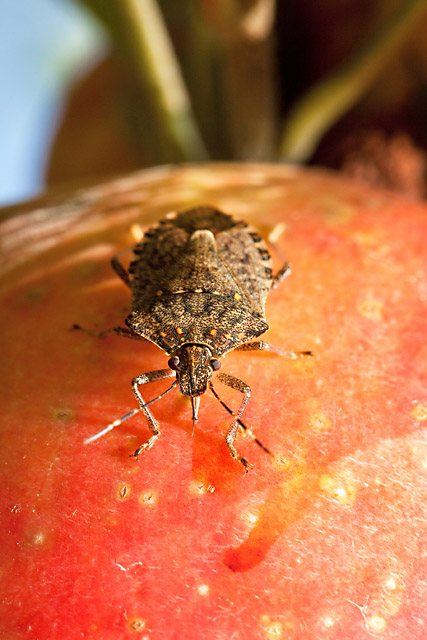 ARS Works Toward Control of Brown Marmorated Stink Bug
ARS Works Toward Control of Brown Marmorated Stink Bug
The brown marmorated stink bug (BMSB) is wreaking havoc in U.S. homes, gardens, and agricultural operations, causing personal and economic woe. Agricultural Research Service scientists are exploring various aspects of monitoring and control of this increasingly important insect pest, which is an invasive Asian species known as a sporadic pest of many tree fruit crops in China, Korea, and Japan. Along with being a household nuisance, it is a major economic threat to producers of orchard fruits such as apple, peach, and pear; garden vegetables and row crops; and many ornamental species.
Since its detection in the northeastern United States a decade ago, the BMSB has been detected in 38 states and has earned the distinction of being classified as the top invasive insect of interest by the U.S Department of Agriculture. With economic losses to the apple industry estimated at $37 million in 2010, the bug's threat to apple growers prompted a Member of Congress to organize a public hearing in western Maryland. There is also concern about the potential damage it could cause to vineyards in California and other states.
Agricultural Research magazine, January 2013 Complete Article
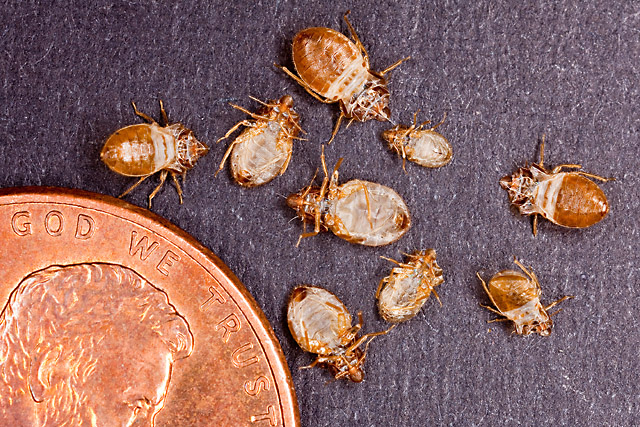 Identifying Compounds To Help Control Bed Bugs
Identifying Compounds To Help Control Bed Bugs
When planning an attack on bothersome pests, it's a good idea to know your enemies, especially if they happen to be bed bugs. These small, flat, blood-feeding insects-an uncommon problem since the 1950s-have once again become a menace in homes, apartments, hotels, shelters, and even places of work in the last 10 years.
Despite extensive efforts to determine whether bed bugs transmit disease-causing pathogens, no evidence indicates that they are a problem other than their biting, blood feeding, and dirty habits. However, some people have severe reactions to bed bug bites, and getting rid of the insects can be costly. Problems often go unnoticed until bug populations increase substantially.
As part of a strategic plan to control bed bugs, scientists at the ARS Henry A. Wallace Beltsville [Maryland] Agricultural Research Center are learning more about bed bug behavior and stepping up their efforts to develop substances that can be used to control them and other biting arthropods and urban pests.
Agricultural Research magazine, February 2013 Complete Article
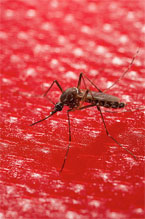 Breadfruit: Not So Appetizing to Mosquitoes
Breadfruit: Not So Appetizing to Mosquitoes
A tropical food that's being hailed by many as a possible solution to world hunger also contains compounds that could help prevent mosquitoes from spreading serious and deadly diseases such as malaria, yellow fever, and dengue fever.
Breadfruit, Artocarpus altilis, is a tropical staple food crop traditionally cultivated for more than 3,000 years throughout Oceania-Melanesia, Micronesia, and Polynesia. The fruit is plentiful, starchy, and packed with nutrients. In addition to being a valuable, nutritious food, breadfruit is used in Hawaii and other regions to control insects. People burn dried clusters of flowers-technically known as "male inflorescences"-to repel flying insects, including mosquitoes
Agricultural Research magazine, November 2013 Complete Article
Sustainable Farming
 The Real Dirt on Biosolids as Soil Amendments
The Real Dirt on Biosolids as Soil Amendments
The U.S. Environmental Protection Agency (EPA) estimates that more than 60 percent of dry biosolids-treated wastewater solids that can be recycled or stored-are applied to land, composted, or used to cover landfills. The biosolids have been processed to kill pathogens, and EPA strictly regulates biosolid use to ensure the materials don't harm the environment, human health, or animal health.
Farmers who follow pre- and postapplication management regulations can obtain permits to use biosolids for amending fields where food and feed crops are grown. Now, research by an Agricultural Research Service scientist is helping to clarify the long-term effects that biosolid amendments can have on some soil types-and how the amendments could affect crop production.
Agricultural Research magazine, January 2013 Complete Article
Crop Diversity
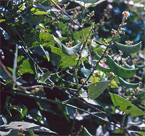 An Atlas for Guatemala, a Tool for Conserving World Crops
An Atlas for Guatemala, a Tool for Conserving World Crops
With exotic names like ayote de caballo (a wild squash), friajolito (a wild bean), and teocinte (a wild relative of corn), Guatemala's native plants seem very different from the agricultural bounty produced by farmers in the United States and other countries. But many of these native plants carry genes that may be vital to global food security. A new tool, developed by a team that includes Agricultural Research Service scientists, will make it easier to find and preserve these important plants. The tool is an interactive atlas designed to provide Guatemalan scientists and land managers with information on where these crop wild relatives grow, where they are relatively safe from habitat destruction, and which ones are rare and most at risk
Agricultural Research magazine, March 2013 Complete Article
Systematics & Collections
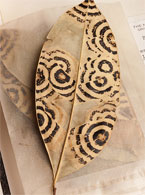 Fungi Can Be Friends or Foes
Fungi Can Be Friends or Foes
Fungi are a large and diverse group of organisms. Some fungi, like mushrooms, are edible and considered crops. Others, however, can cause serious diseases of crop and forest plants, and those diseases can have negative effects on local and international economies as well as on the supply of food and other materials that agriculture provides.
The Agricultural Research Service maintains a unique resource-the U.S. National Fungus Collections-for helpful and detailed information about fungi. Accurate knowledge of fungi is critical for controlling the diseases they cause.
Agricultural Research magazine, July 2013 Complete Article
Scientific Art
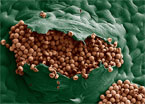 Scientific Works of Art Reveal a Hidden World
Scientific Works of Art Reveal a Hidden World
It's been said that a picture is worth a thousand words, and at the Agricultural Research Service's Electron and Confocal Microscopy Unit (ECMU) in Beltsville, Maryland, this adage couldn't be more true. Led by unit director Gary Bauchan, the ECMU is tasked with producing high-resolution images that provide a window to the extraordinary world of the unseen.
"We have observed viruses, bacteria, fungi, nematodes, insects, mites, and parasites that threaten global food security, and we've contributed to the discovery of how pathogens spread by helping elucidate their relationship to the environment, hosts, and vectors," says Bauchan. "We've also described new biocontrol agents for the management of pathogens and characterized healthy and infected plant and animal tissues to discern the structural changes caused by pathogens."
Agricultural Research magazine, August 2013 Complete Article
Water Quality
 ARS Validates Soil Moisture Data Collected Via Satellite
ARS Validates Soil Moisture Data Collected Via Satellite
The European Space Agency's Soil Moisture and Ocean Salinity (SMOS) mission includes the latest advance in using Earth-orbiting satellites for estimating soil moisture across the globe. The SMOS satellite was launched in 2009 and was designed to estimate soil moisture levels to within 4 percent, which is like measuring a teaspoon of water in a handful of dry soil.
To capture this data, SMOS uses a new sensor technology that is the first passive L-band system-measuring microwave radiation emitted around the frequency of 1.4 gigahertz-in routine operation. But the accuracy of the information collected by this new technology still needs to be verified with actual soil moisture measurements, a task perfectly suited for a team of Agricultural Research Service scientists.
Agricultural Research magazine, August 2013 Complete Article
Pesticide Tracking
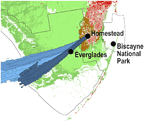 The Pathways of a Shape-Shifting Pesticide
The Pathways of a Shape-Shifting Pesticide
The pesticide endosulfan is being phased out in the United States because of its threat to humans and wildlife. But researchers still want to understand how endosulfan moves through the atmosphere after it has been applied to crops. Endosulfan is used against a range of insects and mites.
So Agricultural Research Service chemist Cathleen Hapeman led a 5-year study that looked at the pesticide's journey out of Florida's Homestead agricultural region. Hapeman works at the ARS Environmental Management and Byproduct Utilization Laboratory (EMBUL) in Beltsville, Maryland. EMBUL chemists Laura McConnell, Walter Schmidt, and Clifford Rice collaborated with Hapeman, along with ARS chemist Thomas Potter, who works in Tifton, Georgia.
Agricultural Research magazine, September 2013 Complete Article
Nutrition
 An Improved Method To Estimate Calories
An Improved Method To Estimate Calories
Mom was right. It's important to chew your food fully.
Chewing begins the digestive process of liberating nutrients from their food matrix, and this release is necessary before nutrients are considered "bioaccessible." In addition, the physical form of a food affects its energy and nutrient availability, which is called "bioavailability." Nutrients must be released from a food-becoming bioaccessible-before they are bioavailable to a consumer.
But hard foods, like nuts, for example, may not be fully chewed before they are swallowed. Within the last decade, several published studies have shown that when certain nuts are included in the diet, the amount of fat excreted in stools increases. In theory, this fat was not absorbed because digesting the nuts' cell walls was difficult, and that reduced the bioaccessibility of the fat within the nut.
Researchers at the Agricultural Research Service's Beltsville [Maryland] Human Nutrition Research Center (BHNRC) studied the caloric accessibility and availability of two different tree nuts, pistachios and almonds. They recognized that reduced fat accessibility could affect the available calories provided by a given food matrix. The goal was to study available energy from foods that require significant mechanical and enzymatic action to permit estimates of bioaccessible energy. To achieve that goal, the ARS researchers further developed the commonly used method for estimating the number of calories in the nuts studied
Agricultural Research magazine, September 2013 Complete Article
 Assessing the U.S. Population's Sodium Intake
Assessing the U.S. Population's Sodium Intake
Sodium intake has become a hot topic as public policymakers address regulatory proposals aimed at lowering the amounts in foods. In 2010, the Institute of Medicine issued a report recommending that new national sodium standards be implemented by the federal government. Several major food manufacturers have long been implementing sodium-reduction strategies through self-regulation.
The usefulness of proposed regulatory steps will depend on accurate and practical methods to monitor the U.S. population's sodium intake. In the late 1990s, researchers at the Agricultural Research Service's Beltsville Human Nutrition Research Center developed the Automated Multiple Pass Method (AMPM), an innovative surveying tool used to obtain information on the amounts of foods and beverages consumed by a survey volunteer during a 24-hour period.
The researchers also conducted a study to evaluate the accuracy of the method, using each volunteer's 24-hour urinary excretion to measure biomarkers of nutrient status. That study, involving 524 male and female volunteers aged 30 to 69 years, confirmed the accuracy of this innovation in food-consumption survey methods.
Agricultural Research magazine, October 2013 Complete Article
Plant Biology
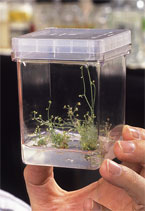 Understanding Signals and Controlling Growth in Plants
Understanding Signals and Controlling Growth in Plants
Imagine being able to slow down or speed up the growth rate of a crop, manipulate when it flowers, or extend its lifespan. An Agricultural Research Service scientist and his Canadian colleague have found a new signaling mechanism in plants that may allow them to do just that.
Autar Mattoo of the ARS Sustainable Agricultural Systems Laboratory in Beltsville, Maryland, Raju Datla of the Canadian Research Council, and collaborators are analyzing the cellular machinery that controls the growth rate, longevity, nutrition uptake, and metabolism of experimental plants via the "TOR signaling" pathway. Potential long-term applications of this research may include crops with early maturation and shorter growing seasons, ornamentals that last longer, and trees with more desirable growth and fruiting patterns.
Agricultural Research magazine, October 2013 Complete Article
